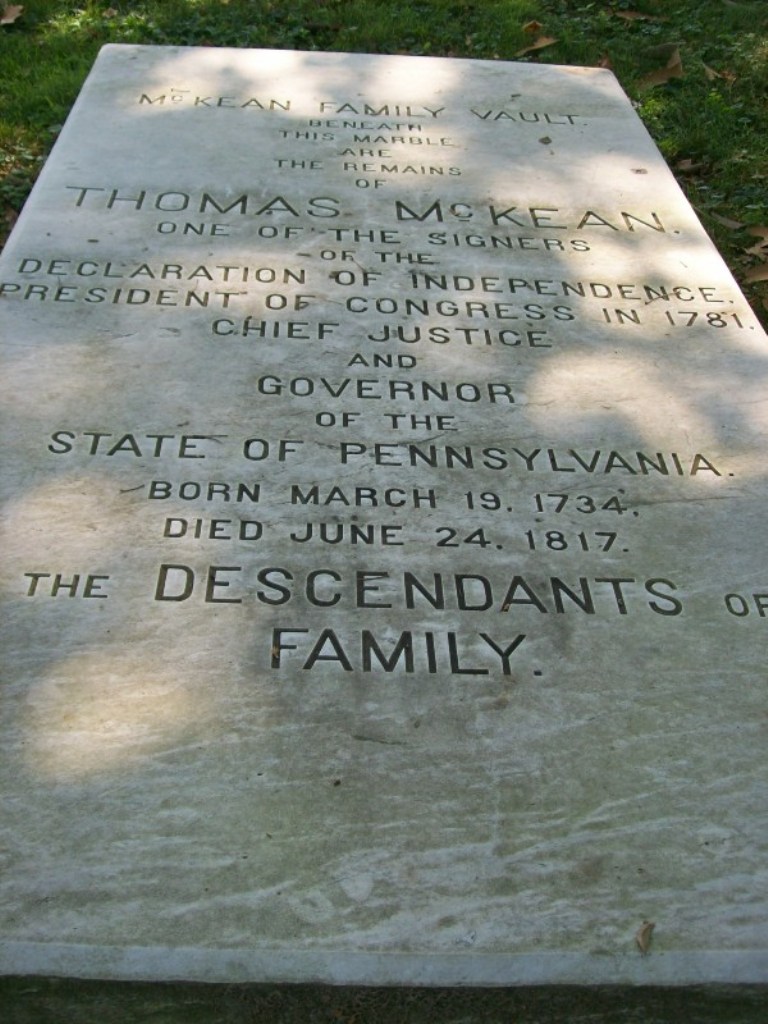Thomas MCKEAN
SAR Patriot #:
P-246520
The following information was assembled from numerous sources and cannot be used directly as proof of Qualifying Service or Lineage.
It is considered a research aid and is intended to assist in locating sources that can be used as proof.
State of Service: PA/DE
Qualifying Service: Patriotic Service / Civil Service
DAR #: A077428
Birth: 1734 New London / Chester / PA
Death: 1817 Philadelphia / Philadelphia / PA
Qualifying Service Description:
- Signer of Declaration of Independence
- Member, Pres., of Continental Congress
- Chief Justice for Pennsylvania (PA)
Additional References:
“Descendants of the Signers of the Declaration of Independence,” Book by Frederick Wallace Pyne, Vol 5, pg 51
Spouse: (1) Mary Borden; (2) Sarah Armitage;
Children: Joseph Borden; Robert; Elizabeth; Anne; Thomas; Sophia Dorothea; Maria Louisa;
Members Who Share This Ancestor
| Date Approved | Society | ACN | SAR Member Info | Lineage via Child | View Application Detail | |
|---|---|---|---|---|---|---|
| 1967-05-26 | FL | Unassigned | Franklin Buchanan Screven (95595) | Laetitia | ||
| 2012-07-24 | WI | 48743 | William Anton Muether (184317) | Joseph | ||
| 2013-02-12 | WI | 51869 | Robert Anton Muether (186361) | Joseph | ||
| 2015-11-04 | GA | 66804 | Ignacio Luis Taboada (196821) | Sarah | ||
| 2016-05-04 | WI | 69081 | William Alexander Muether (198523) | Joseph | ||
| 2016-11-15 | ESP | 71913 | Jose Javier Taboada (200488) | Sarah | ||
| 2016-11-15 | ESP | 71914 | Gonzalo Rafael Taboada y Arechabala (200486) | Sarah | ||
| 2016-11-15 | ESP | 71915 | Juan Carlos Taboada (200487) | Sarah | ||
| 2018-10-05 | GA | 83156 | Ignacio F. Taboada (209102) | Sarah | ||
| 2018-10-05 | GA | 83157 | Gregorio Luis Taboada (209103) | Sarah |
Burial:
Location:
Philadelphia / Philadelphia / PA / USA
Find A Grave Cemetery #:
Marker Type:
Marble Monument
SAR Grave Dedication Date:
Comments:
Directions to Cemetery / Gravesite:
